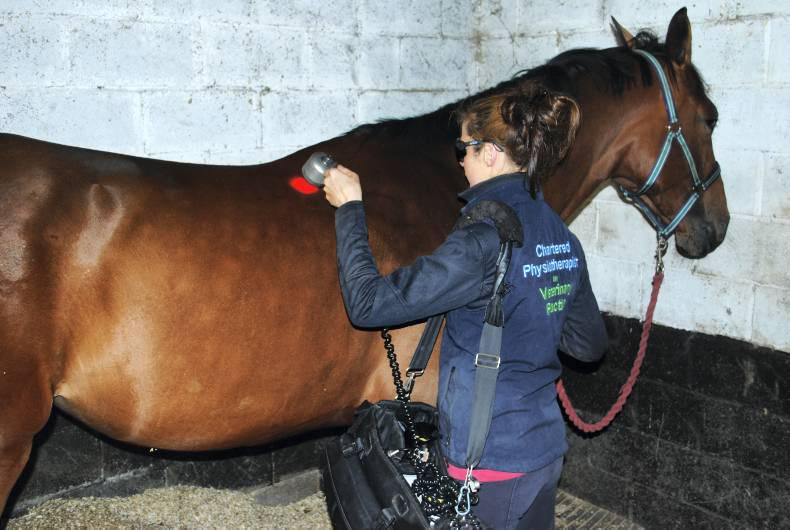Emma Moran works as both a human and veterinary physiotherapist. She works with many of Ireland’s top riders, including international show jumper Cian O’Connor and international event rider Ciaran Glynn
A saddle must allow freedom of movement through the horse’s range of paces and jump. The horse should be able to engage their hindquarters, have forward movement at the shoulders and neck and be able to travel lightly across the ground.
Similar can be said for the rider. A saddle that fits the rider allows the rider to sit comfortably in a balanced position without unnecessary tension and should not interfere with the rider’s aids.
Signs associated with an ill-fitting saddle may be both physical and behavioral. There are many other causes of back pain which may cause similar signs and symptoms, hence a full assessment by a trained professional is necessary to determine the causative factors.
SIGNS OF AN ILL-FITTING SADDLE
Look out for signs such as those described above. If you are unsure, ask your physiotherapist to assess your horse or it may be necessary to contact a professional saddler. In some cases, horses that are not performing optimally may simply be reacting to discomfort caused by an ill-fitting saddle.
I often equate a saddle sitting on a horse’s back to the pair of shoes we wear on our feet. If the shoes are the wrong size, we alter our stride and posture to minimise the discomfort that overtime makes our feet constantly painful and we would feel pretty miserable having to put them back on every day.
Your horse’s saddle is like a pair of shoes that must not only fit the horse, but also fit the rider.
A poorly fitting saddle used for a lengthy time can cause significant back problems, altered biomechanics within the horse and performance issues. To ensure full recovery, the saddle fit needs to be addressed for both the horse and rider.
The horse’s physical issues require treatment and rehabilitation under the guidance of a chartered physiotherapist. It may also be advisable to consult your veterinary surgeon.
A chartered physiotherapist will carry out a full assessment of the horse’s conformation, gait (with and without the saddle, in-hand and ridden) and full palpation of the horse’s muscles, joints, spine and limbs. Following this, the physiotherapist will use therapeutic, hands-on techniques to restore normal muscle and joint function. In some cases the need for non-invasive electrotherapy (e.g. LASER, ultrasound, shock-wave therapy, magnetic therapy) may be required.

The horse owner will be required to carry out stretches and rehabilitative exercises to gradually progress the horse through their stages of recovery and return to optimal function and performance within their sporting discipline.
A chartered physiotherapist has the advantage of being able to treat the rider and their musculoskeletal imbalances too, thereby ensuring both the horse and the rider correct their postures and movement patterns. As a rider, how straight do you sit on your horse?
Emma Moran BA (Sci), BSc (physio), MISCP, CPVP is a member of the Irish Society of Chartered Physiotherapists
Ph: 086 8508071
Web: houndandhorsephysio.com